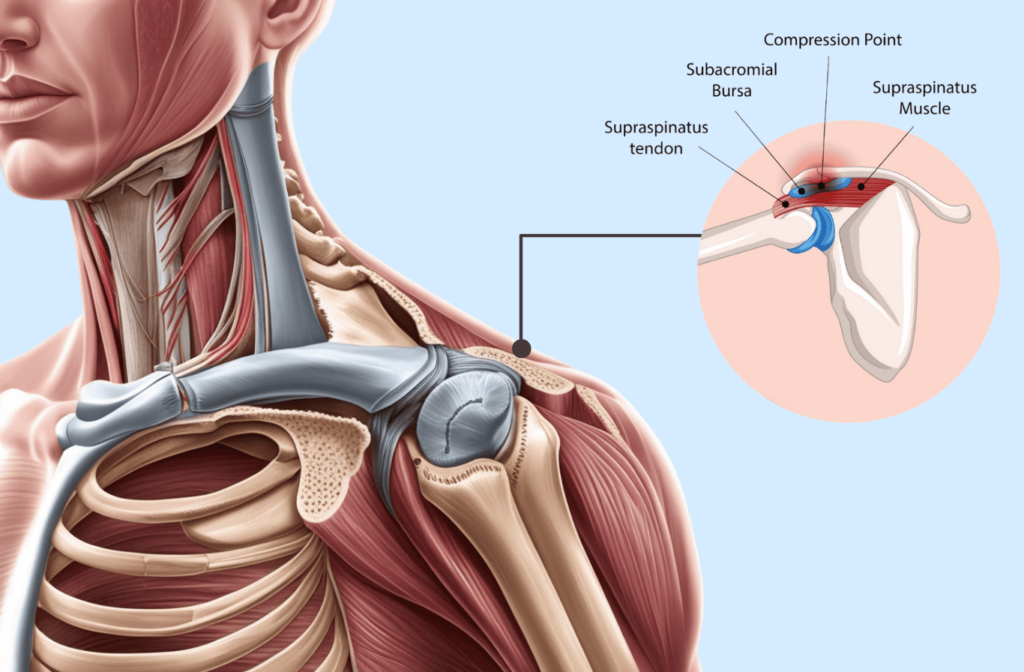Shoulder Impingement
(Rotator Cuff Tendinitis)
what is shoulder impingement?
The condition known as shoulder impingement occurs when the rotator cuff tendons of shoulder are compressed or “impinged” between two bones, on elevation of the shoulder. Inflammation or irritation usually results from the narrowing of the area between the rotator cuff and the roof of shoulder blade (acromion).

Causes of Shoulder Impingement
Several factors can contribute to shoulder impingement, including:
- Repetitive Overhead Movements: Activities that involve frequent lifting or reaching, such as swimming, tennis, or certain work tasks, can cause wear and tear on the shoulder tendons.
- Poor Posture: Slouching or rounded shoulders can change the alignment of the shoulder joint, increasing the risk of impingement.
- Rotator Cuff Injuries: Weakness or tears in the rotator cuff tendons can lead to poor shoulder mechanics, contributing to impingement.
- Bone Spurs: Over time, bone spurs can develop on the acromion, reducing the space available for tendons to move freely.
- Aging: As we age, the tendons in the shoulder naturally become less flexible and more prone to injury.
Symptoms of Shoulder Impingement
Common symptoms of shoulder impingement include:
- Shoulder pain, while reaching behind or raising the arm overhead
- A sensation of stiffness or limited mobility weakness in the arm or shoulder
- When the shoulder area is touched, it feels tender.
- Intense pain that gets worse at night or when you lie on the side that is afflicted
Treatment Options
Depending on the severity of the disease, non-surgical and surgical treatments are frequently used to treat shoulder impingement.
- Rest and activity modification:You can help the shoulder heal by reducing inflammation and avoiding activities that make symptoms worse.
- Physical therapy: Symptoms can be reduced with a regular exercise program designed to increase shoulder muscle strength and flexibility.
- Medications: doctor may prescribe (NSAIDs). These medications help reduce swelling and provide relief from discomfort, allowing you to move more freely.
- Corticosteroid injections: In some cases, an injection may be used to decrease inflammation and provide temporary pain relief.
- Surgery: If non-surgical treatments don’t bring relief, surgery might be needed. One common procedure is Shoulder arthroscopic, where a surgeon removes bone spurs or repairs damaged tendons to create more space for the tendons to move without rubbing or pinching.


